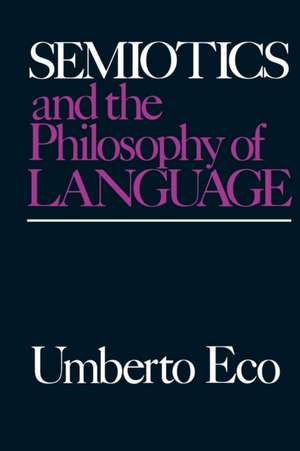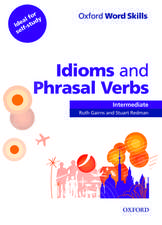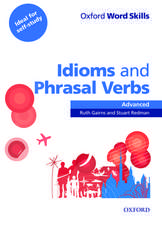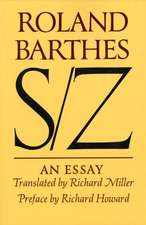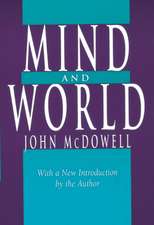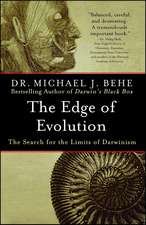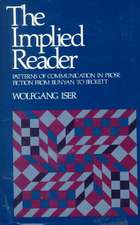Semiotics and the Philosophy of Language: Advances in Semiotic
Autor Umberto Ecoen Limba Engleză Paperback – 21 iul 1986
Preț: 158.60 lei
Nou
30.35€ • 32.96$ • 25.50£
Carte tipărită la comandă
Livrare economică 22 aprilie-06 mai
Specificații
ISBN-10: 0253203988
Pagini: 256
Ilustrații: illustrations
Dimensiuni: 156 x 234 x 14 mm
Greutate: 0.4 kg
Ediția:Midland Book.
Editura: MH – Indiana University Press
Seria Advances in Semiotic
Cuprins
Note
Introduction
1. Signs
1.1. Crisis of a concept
1.2. The signs of an obstinacy
1.3. Intension and extension
1.4. Elusive solutions
1.5. The deconstruction of the linguistic sign
1.5.1. Sign vs. figura
1.5.2. Signs vs. sentences
1.5.3. The sign as difference
1.5.4. The predominance of the signifier
1.5.5 Sign vs. text
1.5.6. The sign as identity
1.6. Signs vs. words
1.7. The stoics
1.8. Unification of the theories and the predominance of linguistics
1.9. The ÔinstructionalÕ model
1.10. Strong codes and weak codes
1.11. Abduction and inferential nature of signs
1.12. The criterion of interpretability
1.13. Sign and subject
2. Dictionary vs. Encyclopedia
2.1. Porphyry strikes back
2.1.1. Is a definition an interpretation?
2.1.2. The idea of a dictionary
2.1.3. The interpretation of the markers
2.2 Critique of the Porphyrian tree
2.2.1 Aristotle on definition
2.2.2. The Porphyrian tree
2.2.3. A tree which is not a tree
2.2.4. The tree is entirely made up with differentiae
2.2.5. Differentiae as accidents and signs
2.3. Encyclopedias
2.3.1. Some attempts: registering contexts and topics
2.3.2. Some attempts: registering frames and scripts
2.3.3 Some attempts: stereotypes and commonsense knowledge
2.3.4. Clusters
2.3.5. The encyclopedia as labyrinth
2.3.6. The dictionary as a tool
3. Metaphor
3.1. The metaphoric nexus
3.2. Traditional definitions
3.3. Aristotle: synecdoche and Porphyrian tree
3.4. Aristotle: metaphors of three terms
3.5. Aristotle: the proportional scheme
3.6. Proportion and condensation
3.7. Dictionary and encyclopedia
3.8. The cognitive function
3.9. The semiosic background: the system of content
3.9.1. The medieval encyclopedia and analogia entis
3.9.2. TesauroÕs categorical index
3.9.3. Vico and the cultural conditions of invention
3.10. The limits of formalization
3.11. Componential representation and the pragmatics of the text
3.11.1. A model by ÔcasesÕ
3.11.2. Metonymy
3.11.3. ÔTopicÕ, ÔframesÕ, isotopies
3.11.4. Trival metaphors and ÔopenÕ metaphors
3.11.5. Five rules
3.11.6 From metaphors to symbolic interpretation
3.12. Conclusions
4. Symbol
4.1. Genus and species
4.2. Expressions by ratio facilis
4.2.1. Symbols as conventional expressions
4.2.2 Symbols as expressions conveying an indirect meaning
4.3. Expressions produced by ratio difficilis
4.3.1. Symbols as diagrams
4.3.2. Symbols as tropes
4.3.3. The Romantic symbol as an aesthetic text
4.4. The symbolic mode
4.4.1. The Hegelian symbol
4.4.2. Archetypes and the Sacred
4.4.3. The symbolic interpretation of the Holy Scriptures
4.4.4. The Kabalistic drift
4.5. Semiotics of the symbolic mode
4.6. Conclusions
5. Code
5.1. The rise of new category
5.1.1 A metaphor?
5.1.2. Dictionaries
5.2. The landslide effect
5.3. Codes and communication
5.4. Codes as s-codes
5.4.1. Codes and information
5.4.2. Phonological code
5.4.3. Semantic s-codes
5.5. Cryptography and natural languages
5.5.1. Codes, ciphers, cloaks
5.5.2. From correlation to inference
5.5.3. Codes and grammars
5.6. S-codes and signification
5.6.1. S-codes cannot lie
5.6.2. S-codes and institutional codes
5.7 The genetic code
5.8. Toward a provisonal conclusion
6. Isotopy
6.1. Discursive isotopies within sentences with paradigmatic disjunction
6.2. Discursive isotopies within sentences with syntagmatic disjunction
6.3. Discursive isotopies between sentences with paradigmatic disjunction
6.4. Discursive isotopies between sentences with syntagmatic disjunction
6.5. Narrative isotopies connected with isotopic discursive disjunctions generating mutually exlusive stories
6.6 Narrative isotopies connected with isotopic discursive disjunctions that generate complementary stories
6.7. Narrative isotopies connected with discursive isotopic disjunctions that generate complementary stoies in each case
6.8. Extensional isotopies
6.9. Provisional conclusions
7. Mirrors
7.1. Is the mirror image a sign?
7.2. The imaginary and the symbolic
7.3. Getting in through the Mirror
7.4. A phenomenology of the mirror: the mirror does not invert
7.5. A pragmatics of the mirror
7.6. The mirror as a prosthesis and a channel
7.7. Absolute icons
7.8. Mirrors as rigid designators
7.9. On signs
7.10. Why mirrors do not produce signs
7.11. Freaks: distorting mirrors
7.12. Procatoptric staging
7.13. Rainbows and Fata Morganas
7.14. Catoptric theaters
7.15. Mirrors that ÔfreezeÕ images
7.16. The experimentum crucis
References
Index of authors
Index of subjects
Recenzii
Descriere
"Eco wittily and enchantingly develops themes often touched on inhis previous works, but he delves deeper into their complex nature... thiscollection can be read with pleasure by those unversed in semiotic theory." --Times Literary Supplement
